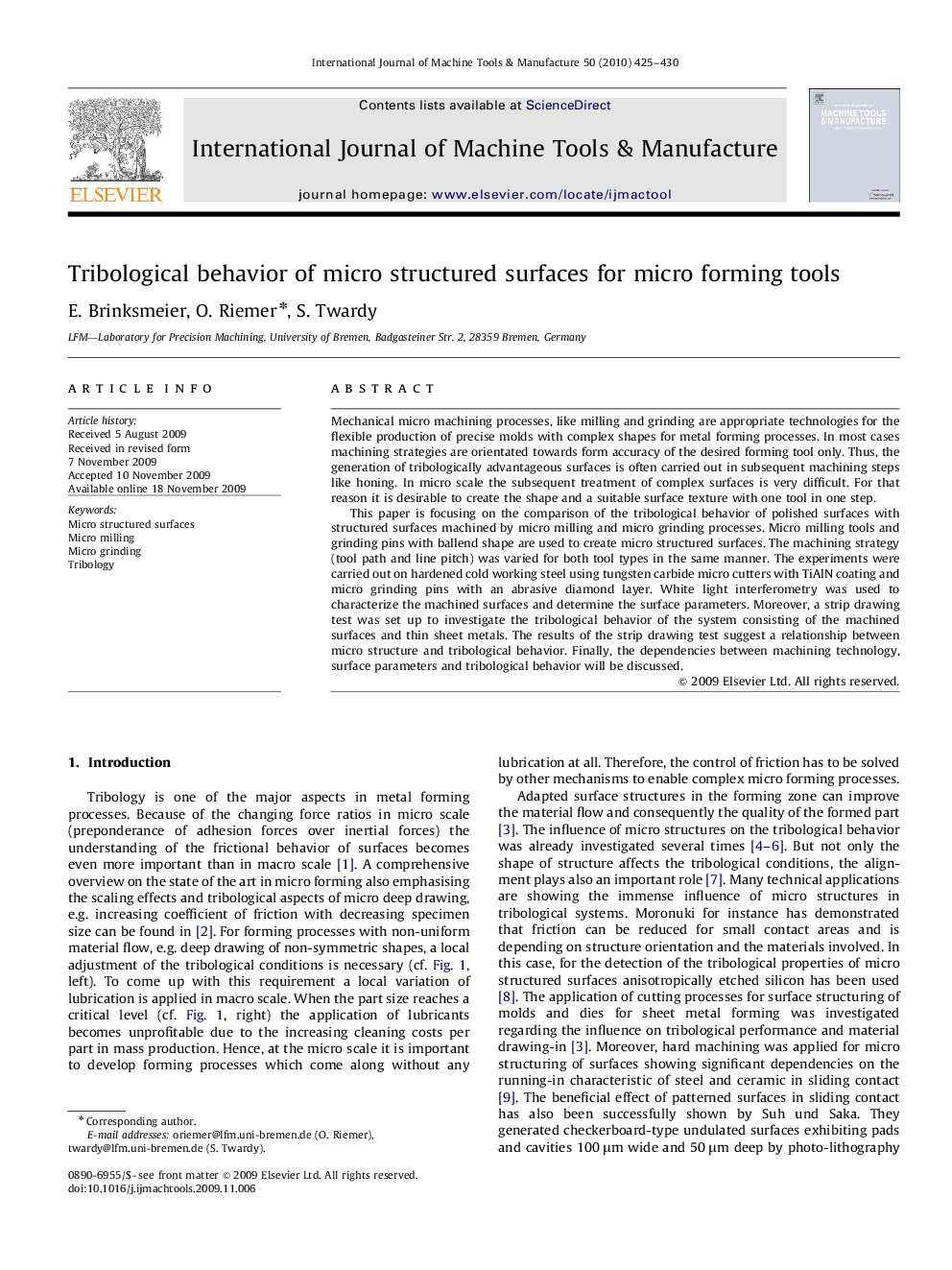| کد مقاله | کد نشریه | سال انتشار | مقاله انگلیسی | نسخه تمام متن |
|---|---|---|---|---|
| 778959 | 1464557 | 2010 | 6 صفحه PDF | دانلود رایگان |

Mechanical micro machining processes, like milling and grinding are appropriate technologies for the flexible production of precise molds with complex shapes for metal forming processes. In most cases machining strategies are orientated towards form accuracy of the desired forming tool only. Thus, the generation of tribologically advantageous surfaces is often carried out in subsequent machining steps like honing. In micro scale the subsequent treatment of complex surfaces is very difficult. For that reason it is desirable to create the shape and a suitable surface texture with one tool in one step.This paper is focusing on the comparison of the tribological behavior of polished surfaces with structured surfaces machined by micro milling and micro grinding processes. Micro milling tools and grinding pins with ballend shape are used to create micro structured surfaces. The machining strategy (tool path and line pitch) was varied for both tool types in the same manner. The experiments were carried out on hardened cold working steel using tungsten carbide micro cutters with TiAlN coating and micro grinding pins with an abrasive diamond layer. White light interferometry was used to characterize the machined surfaces and determine the surface parameters. Moreover, a strip drawing test was set up to investigate the tribological behavior of the system consisting of the machined surfaces and thin sheet metals. The results of the strip drawing test suggest a relationship between micro structure and tribological behavior. Finally, the dependencies between machining technology, surface parameters and tribological behavior will be discussed.
Journal: International Journal of Machine Tools and Manufacture - Volume 50, Issue 4, April 2010, Pages 425–430